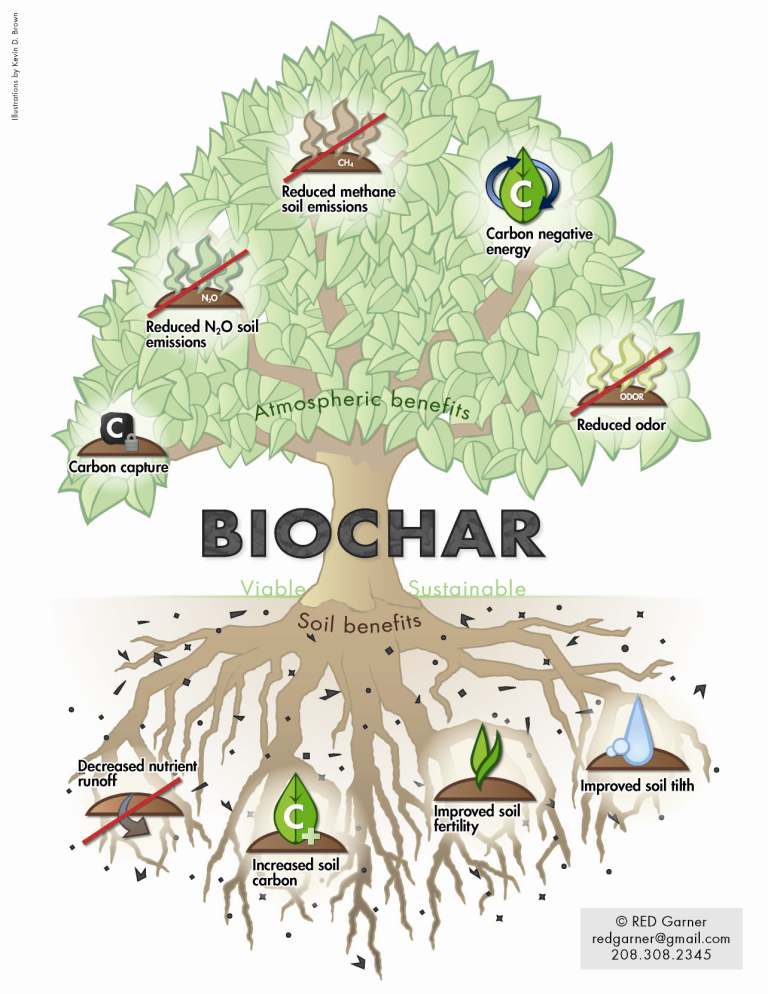2050kids is laying the groundwork for our first project, which would engage Northern California Native American communities in community-based biochar and permaculture practices to tackle the state’s historic drought, reduce climate change, and grow more nutritious and abundant crops.
This connection taps into the Traditional Environment Knowledge (TEK) of the Indigenous American culture, whose agricultural practices used ‘Terra preta de indio (“Indian black earth”) for farming. Scientists discovered this ‘fertilizer’ creates soil with the capacity to store atmospheric carbon for between 2 and 5 thousand years.
“If you could continually turn a lot of organic material into biochar, you could, over time, reverse the history of the last two hundred years” says Bill McKibben, environmental author and founder of 350.org. “We can, literally, start sucking some of the carbon that our predecessors have poured into the atmosphere down through our weeds and stalks and stick it back in the ground. We can run the movie backward. We can unmine some of the coal, undrill some of the oil. We can take at least pieces of the Earth and – this is something we haven’t done for quite a while – leave them Better Than We Found Them.”
In a recent article for Post Carbon Institute’s Resilience, Biochar! The verdict is in: it works. And you should do it, Philip Rutter promotes biochar for its capacity to:
[list type=”caret”]
- hold on to nutrients, but make them available to plants
- retain water in droughts, while insuring plants receive sufficient nourishment t
- raise the pH of acid soils, resulting in healthier and larger crops.
[/list]
“The bottom line, today,” Rutter writes, is that “your soil will benefit, your crops will benefit; and yes, the atmosphere will benefit – a little. But you know how that works – “a little” times thousands adds up.””
An “AHA” Moment
2050kids advisor James Greyson, head of Blindspot Think Tank who also advises the International Biochar Institute, couldn’t agree more. Small scale biochar projects, he proposes, hold the key to the simultaneous recovery of climate, nature and economies.
“Sustainable biochar is a game-changing climate solution,” Greyson writes. “It uniquely provides renewable energy, energy and food resilience, carbon mitigation, adaptation and sequestration. It also offers civilisation an “AHA” moment when we suddenly embrace the full scope of the challenge and the opportunities. Forget incremental change – this is whole system change where the climate, ecosystems and economies all recover together.”
In an April 10 Salon interview on using ancient practices to combat climate change and address the California drought, author and University of Missouri professor Karen Piper proposes successfully addressing the State’s water crisis will require stringent regulations on California’s huge AG business. She also advocates a major shift to drought-resistant crops, introducing permaculture principles which incorporate swale irrigation systems, and employing biochar as a fertilizer to absorb and stop production of CO2.
“A lot of international organizations are recommending biochar now to try to slow down climate change,” says Piper, the author of The Price of Thirst: Global Water Inequality and the Coming Chaos. “They could do simple things right now, like don’t allow flood irrigation, where you just flood the Central Valley to grow whatever trees or rice or whatever and then all that evaporates, leading to major water losses. So there are certain things they can do in the short-run and then other things they can do in the long-run.”
2050kids is collaborating with Paul Taylor, PhD, author of The Biochar Revolution
Transforming Agriculture and the Environment and Oakland’s Institute of Urban Homesteading to develop programs beginning this summer to involve local Native American communities in projects utilizing both biochar and permaculture.
We are also consulting with Raymond Baltar, Director of the Sonoma Biochar Initiative. Baltar is engaged in lobbying for large-scale field trials in California to test biochar’s capacity to retain water.
Stay tuned for news!

